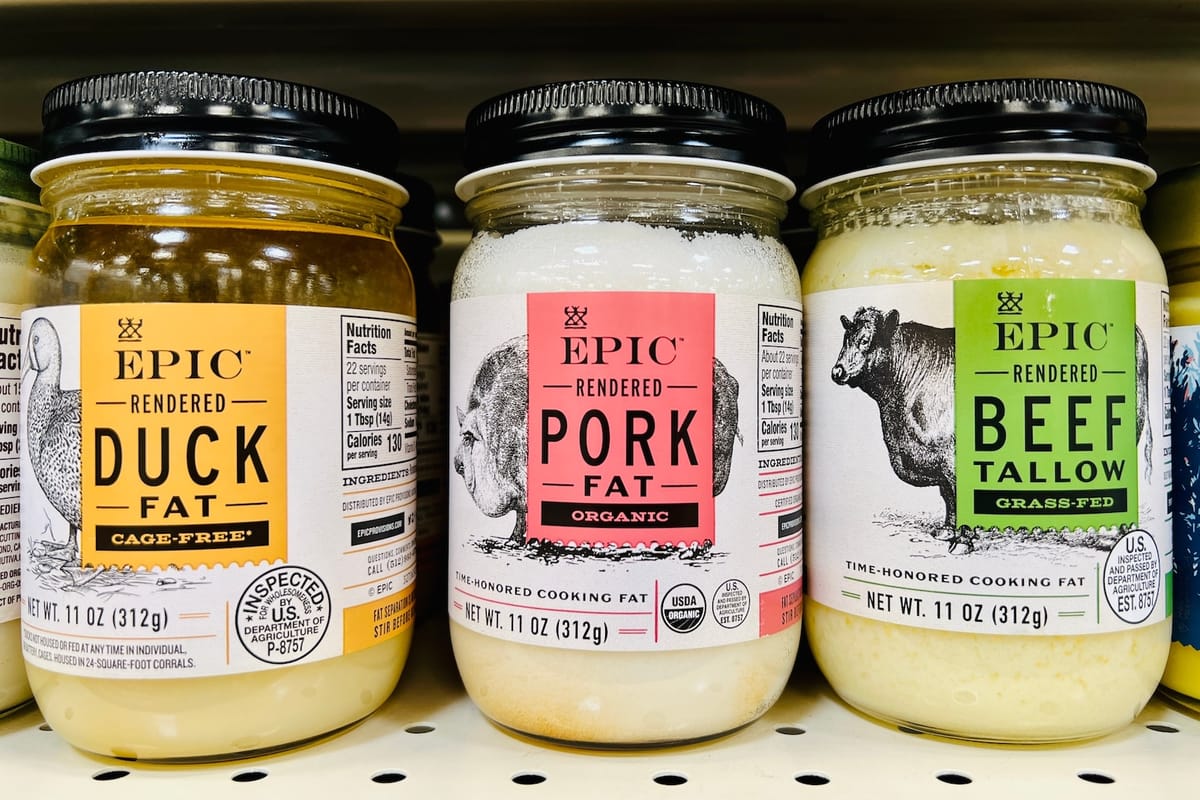

A Revival of Time-Honored Cooking Fats
Across American kitchens, a quiet revolution is underway as home cooks turn away from modern vegetable oils and embrace the rich, flavorful fats their grandparents once used. Butter, lard, tallow, and ghee are making a comeback, driven by a desire for wholesome, minimally processed ingredients that deliver both taste and nourishment. This shift reflects a growing skepticism of industrial seed oils, which have dominated for decades but are now questioned for their health impacts.
The move toward traditional fats is rooted in both nostalgia and practicality. These fats, long staples in cuisines worldwide, offer unique flavors and versatility that modern oils often lack. From the golden crust of a pie baked with lard to the savory depth of vegetables roasted in duck fat, cooks are rediscovering what made these fats indispensable.
Why Traditional Fats Are Gaining Ground
The rise of traditional fats stems from concerns about industrial seed oils like canola and soybean, which are often processed with high heat and chemicals. Some health advocates argue these oils, high in omega-6 fatty acids, may contribute to inflammation when consumed in excess. In contrast, traditional fats like butter and ghee are rich in fat-soluble vitamins, while animal fats like tallow and lard provide robust flavors for high-heat cooking.
Andrea Chesman, author of 'The Fat Kitchen,' began using animal fats to reclaim forgotten skills and support local farmers. 'Once I started working with the fats, I realized everything came out better—that’s what led me to keep with it,' she said. Her work highlights the practical benefits of fats that were once kitchen cornerstones, from preserving food to enhancing dishes.
How to Cook with Butter and Ghee
Butter, a favorite in American and European cooking, brings unmatched richness to baking and moderate-heat cooking. Opt for grass-fed, cultured butter for deeper flavor and higher nutrient content, marked by its golden hue. Ghee, a clarified butter free of lactose and casein, is ideal for high-heat tasks like sautéing or roasting due to its high smoke point and nutty taste.
For example, ghee can transform simple dishes like roasted vegetables or scrambled eggs, adding a warm, aromatic depth. 'Ghee is just butter with the milk solids removed and water cooked off,' notes a culinary expert, emphasizing its versatility. Home cooks can easily incorporate ghee into Indian or Middle Eastern recipes or use it as a substitute for vegetable oil in frying.
Lard and Tallow: The Power of Animal Fats
Lard, rendered from pork fat, is celebrated for its ability to create flaky pie crusts and crispy fried chicken. Its neutral flavor makes it a versatile choice for baking and frying, particularly in Southern and Mexican cuisines. Tallow, derived from beef fat, excels in high-heat cooking like deep-frying and is prized for its clean aroma when sourced from grass-fed cattle.
Jeremy Kittelson, culinary director at Edible Beats in Denver, encourages cooks to embrace whole-animal cookery. 'It’s an accessible lesson in whole-animal cookery: between fat rendered from the skin, the cracklings you get as a byproduct, the different cuts of meat, and stock coaxed from the bones, you get five different preparations,' he explains. Saving drippings from roasts or rendering fat from trimmings can yield flavorful fats for everyday cooking.
Poultry Fats and Olive Oil: Versatile Classics
Poultry fats like schmaltz, rendered from chicken fat, add savory depth to dishes like matzo balls or roasted potatoes. Duck fat, a chef favorite, elevates root vegetables or popcorn with its luxurious flavor. These fats, solid at room temperature, create crisp textures without greasiness, as they harden quickly after cooking.
Olive oil, a Mediterranean staple, remains a heart-healthy choice for low-heat cooking and dressings. Rich in monounsaturated fats and antioxidants, it offers grassy or peppery notes. 'Olive oil is central to Mediterranean cuisines,' a culinary source notes, recommending cold-pressed, extra-virgin varieties for maximum flavor and freshness.
Practical Tips for Home Cooks
Getting started with traditional fats is simpler than it seems. Save bacon grease or roast drippings in a refrigerator jar for sautéing vegetables or meats. Render fat from chicken trimmings or source unrendered lard from a local butcher. For high-heat cooking, choose tallow or ghee, while butter and olive oil shine in gentler tasks like baking or drizzling over salads.
The key, as Chesman advises, is to 'just start cooking with it.' Replace vegetable oil with animal fat when sautéing onions or searing meat. The results—crisp, flavorful dishes—speak for themselves, reconnecting cooks with the simple, satisfying methods of the past.
Learn More
Purchase the book 'The Fat Kitchen' by Andrea Chesman on Amazon
Dues are $12 per year. Member benefits:
✅ Ad-Free Website Viewing
✅ Advocacy for Republican Seniors
✅ 120+ Senior Discounts
✅ Member Only Newsletters